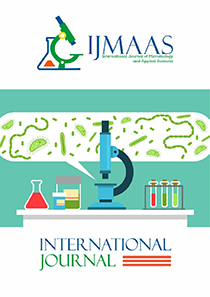Diversity Index of Fungi Isolated from Six Maize (Zea mays L) Varieties in Rivers State, Nigeria
Vol. 3, Issue 3, 2024
KEYWORDS
Maize, Zea mays, diversity, mycoflora, mycotoxins, Aspergillus flavus, A. parasiticus.
Abstract
The species diversity of fungi on cultivated maize varieties was carried out at the Teaching and Research Farm of the Rivers State University to identify mycotoxin-producing fungi in 6 maize (Zea mays L) varieties (Land Race (Local variety), Premier Oba Super 6, Premier Oba Super 2G, Premier Oba Super 13, SAMAZ 60, and SC719 Seedco). The experiment was laid out in Randomized Complete Block Design (RCBD) having 4 replications. Isolation and identification of fungi was done following standard microbiological procedures. The total heterotrophic fungal (THF) count of fresh and dry maize ranged from 4.58×104CFU/g – 12.70×104CFU/g and 10.37×104CFU/g – 29.83×104CFU/g respectively. Results on the species diversity of fungi associated with fresh maize, Alternaria sp. revealed greater diversity of fungi community with Simpson_1-D of (0.89) and reflects greater diversity for both abundance and evenness of the species present with a Shannon_H value of 1.97. Fungi Dry maize storage Aspergillus flavus (24) with the highest value was the most abundant in diversity. Aspergillus parasiticus revealed greater diversity of fungi community with Simpson_1-D of (0.91) and reflected greater diversity for both abundance and evenness of the species present with a Shannon_H value of 2.07. This research study recommends that Farmers in Rivers State should apply good agronomic practices during cultivation and proper management during harvest and storage to ensure mycotoxin-free grains. To prevent mycotoxin contamination in pre-harvest, farmers should carefully study weather conditions and only practice when it is most favourable.
Current: Vol. 4, Issue 1, 2025

Call for papers
The International Journal of Microbiology and Applied Sciences warmly welcome your valuable articles for publication.
